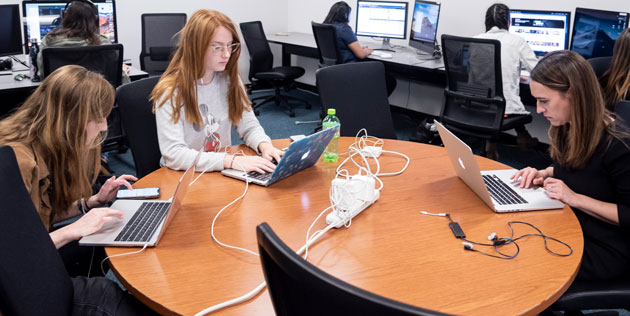Online Projects

Should circumstances arise that require you to teach online, you may also find it necessary for students to complete projects remotely and then submit them in some sort of digital format. In the guidance that follows, the term projects includes written reports, oral presentations, crafted objects, and similar types of products that serve as the culmination of students' individual or group work. Best practices for online tests (roughly conceived as documents that students receive, complete, and return to the professor) are available elsewhere.
Tools for Receiving Project Documents
Some student projects will result in some type of "deliverable" document such as a report, presentation slide deck, or work of art. (For projects that culminate in some type of performance, see the next section.) In the online context, these deliverables will usually need to be recorded in a digital format that can be transmitted over the internet.
In some situations, you might be able to receive physical products from students through the mail or a delivery service. For some objects, however, this option may prove prohibitively expensive.
Tools for Receiving Project Performances
Some student projects will result in some type of presentation, such as a speech, demonstration, or performance. (For projects that typically culminate in some type of document, see the previous section.) In the online context, these performances will usually need to be transmitted over the internet in a digital format, either synchronously or asynchronously.
Preparing Students for Online Project Submissions
The watchword for any instructions that you provide students for remote project completion and online submission is clarity. A useful rule of thumb is to give students more details about assignment submission than you really think you need. Most students will appreciate the lack of ambiguity.
Moreover, in the wake of a sudden transition to remote learning, students may need to adapt quickly to unfamiliar software. Therefore, assigning a practice submission—ungraded and smaller in scale, but otherwise similar in terms of the essential elements—can help students get accustomed to the tools they must use to complete their higher-stakes graded assignments.
File Formats
Tell students exactly which file formats you will accept, and explicitly state the consequences for submitting work in other formats. If you are not sure which format will best meet your needs, please consult the CTE, the TechLearn team, or your division's Technology Liaison. In general:
- For most text-based or image-based projects, PDF should serve well.
- For most audio-only projects, MP3 should serve well.
- For most video projects, MP4 should serve well.
Project Parameters
If various formatting parameters such as page or slide size, image resolution, font size, and so forth will affect students' grades—or even if you just want these things to be standardized to avoid potential inconsistencies—be sure to tell students about these factors up front. Please note that the default values for various software packages were determined by the applications' publishers for their own reasons, which generally do not include conformity with common academic style guides.